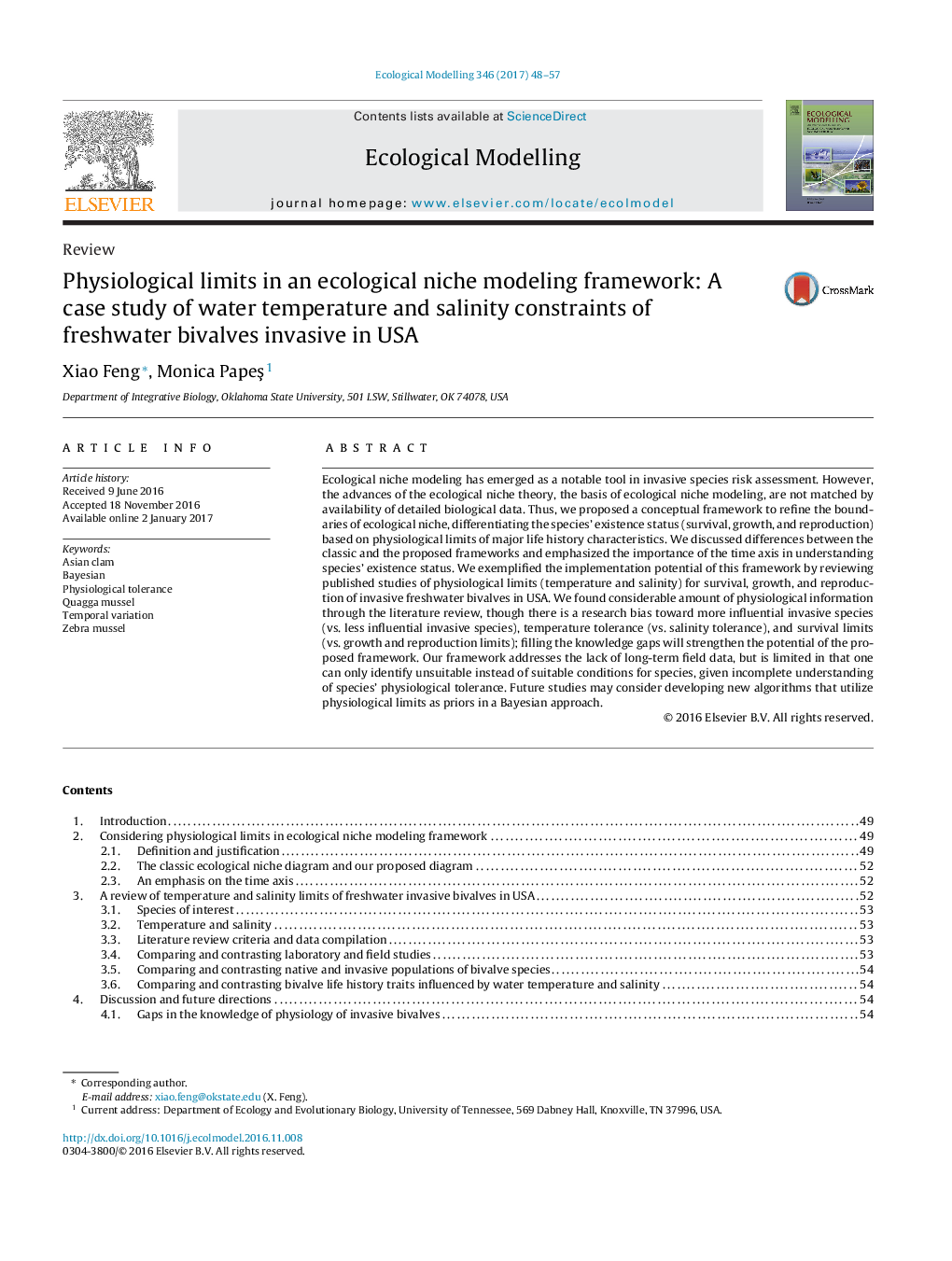| Article ID | Journal | Published Year | Pages | File Type |
|---|---|---|---|---|
| 5742344 | Ecological Modelling | 2017 | 10 Pages |
â¢We proposed an ENM framework with refined boundaries of the ecological niche.â¢We differentiated species existence status into survival, growth, and reproduction.â¢The framework can help clarify the target of ENM with different types of occurrences.â¢We emphasized the importance of time axis in understanding species distribution.â¢Considerable knowledge of physiology exists in literature, but knowledge gaps exist.
Ecological niche modeling has emerged as a notable tool in invasive species risk assessment. However, the advances of the ecological niche theory, the basis of ecological niche modeling, are not matched by availability of detailed biological data. Thus, we proposed a conceptual framework to refine the boundaries of ecological niche, differentiating the species' existence status (survival, growth, and reproduction) based on physiological limits of major life history characteristics. We discussed differences between the classic and the proposed frameworks and emphasized the importance of the time axis in understanding species' existence status. We exemplified the implementation potential of this framework by reviewing published studies of physiological limits (temperature and salinity) for survival, growth, and reproduction of invasive freshwater bivalves in USA. We found considerable amount of physiological information through the literature review, though there is a research bias toward more influential invasive species (vs. less influential invasive species), temperature tolerance (vs. salinity tolerance), and survival limits (vs. growth and reproduction limits); filling the knowledge gaps will strengthen the potential of the proposed framework. Our framework addresses the lack of long-term field data, but is limited in that one can only identify unsuitable instead of suitable conditions for species, given incomplete understanding of species' physiological tolerance. Future studies may consider developing new algorithms that utilize physiological limits as priors in a Bayesian approach.
Graphical abstractDownload high-res image (114KB)Download full-size image
